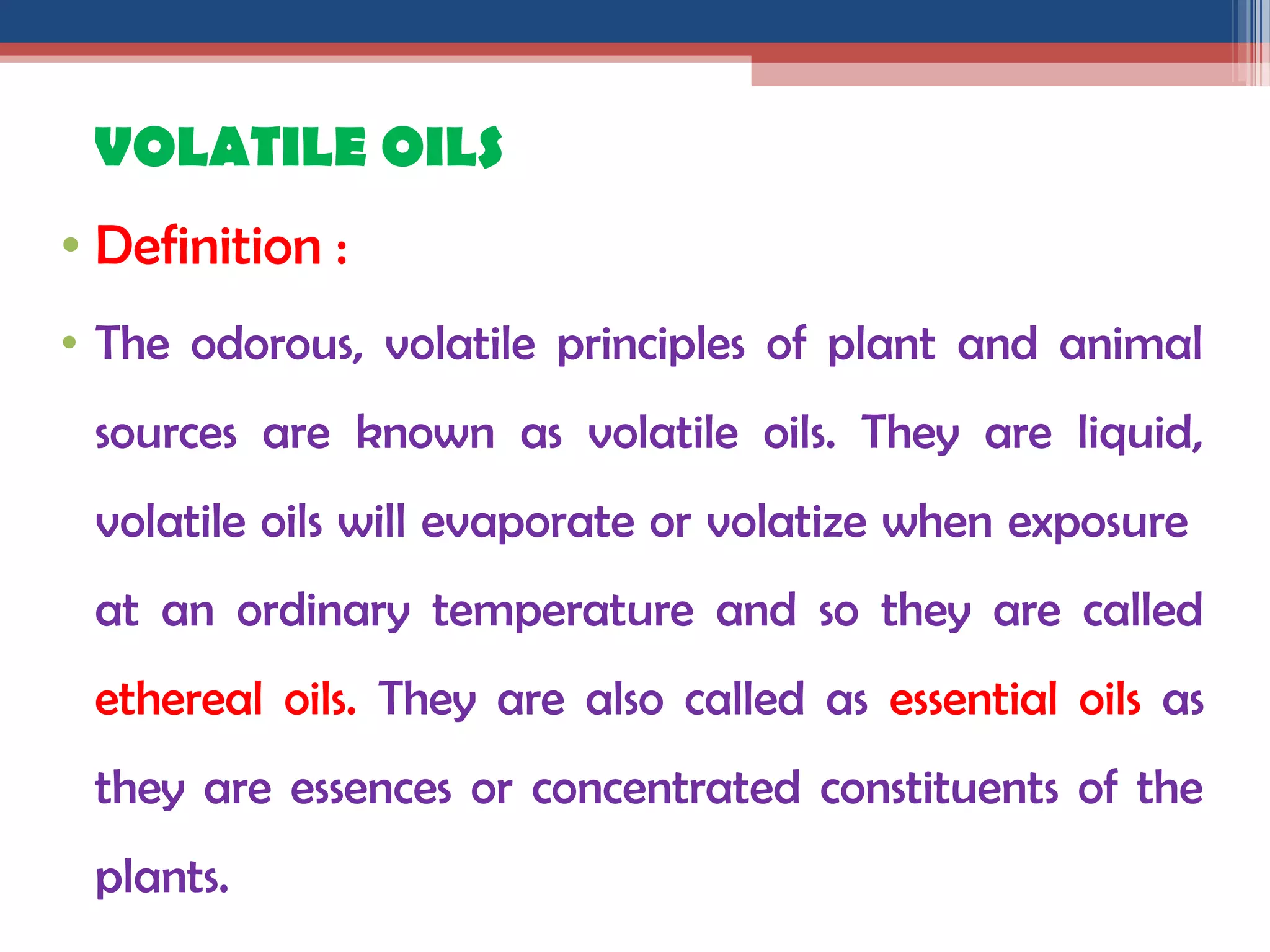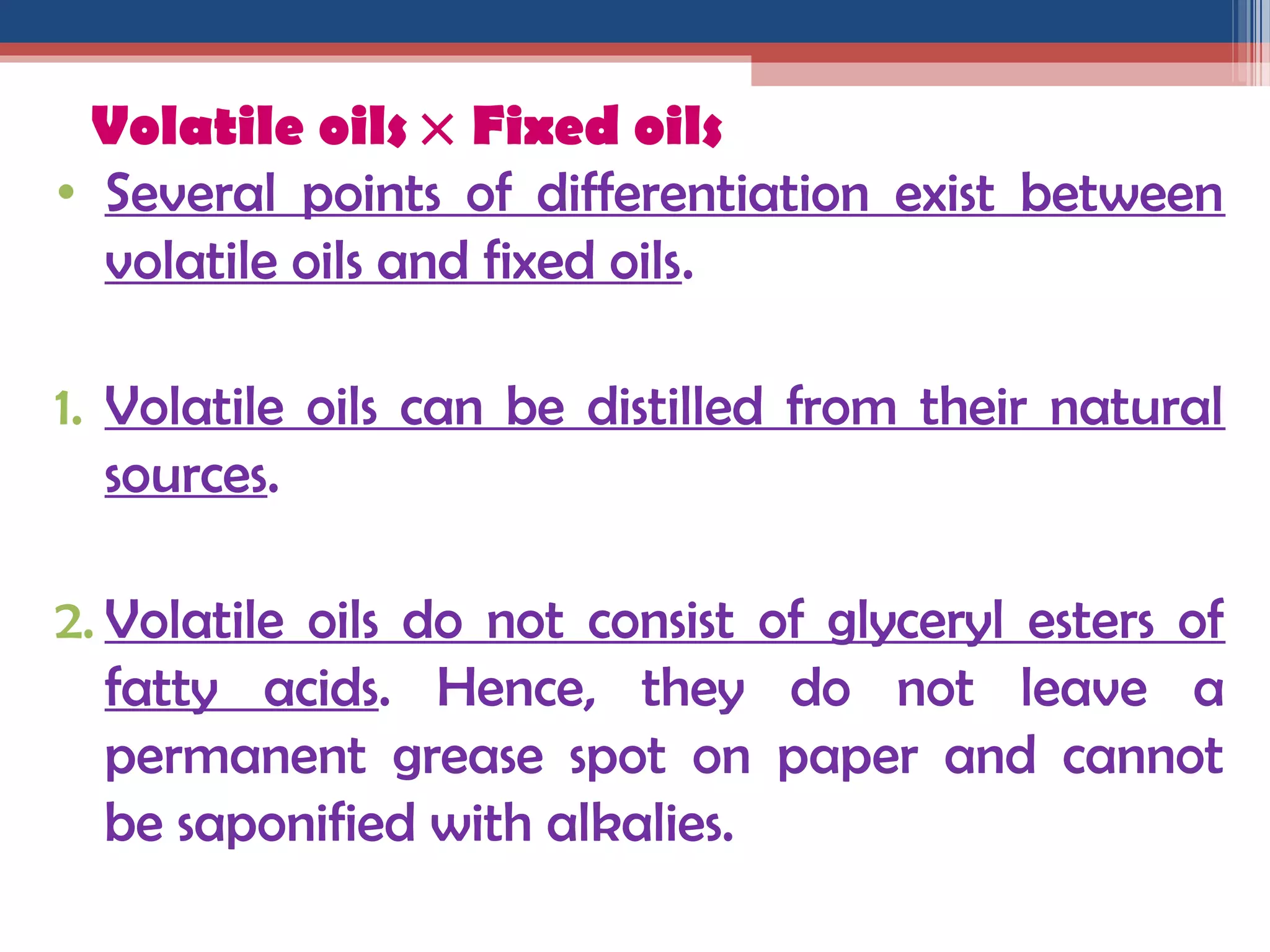The document provides information about volatile oils (also known as essential oils), including their definition, properties, chemical nature, classification, methods of preparation from plants, production and uses. It discusses several individual volatile oils (clove, cinnamon, eucalyptus, mentha, sandalwood, lemon grass), describing their method of production, chemical constituents, medicinal uses, and diagnostic characters.





























































































